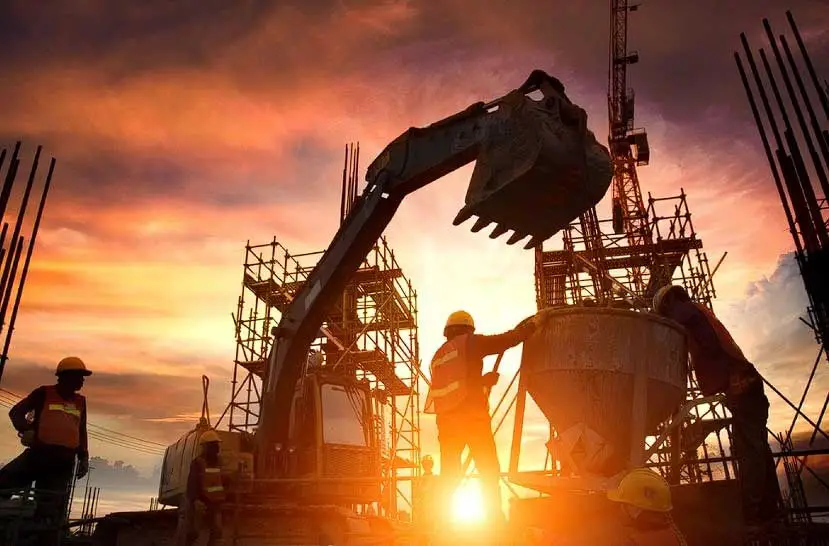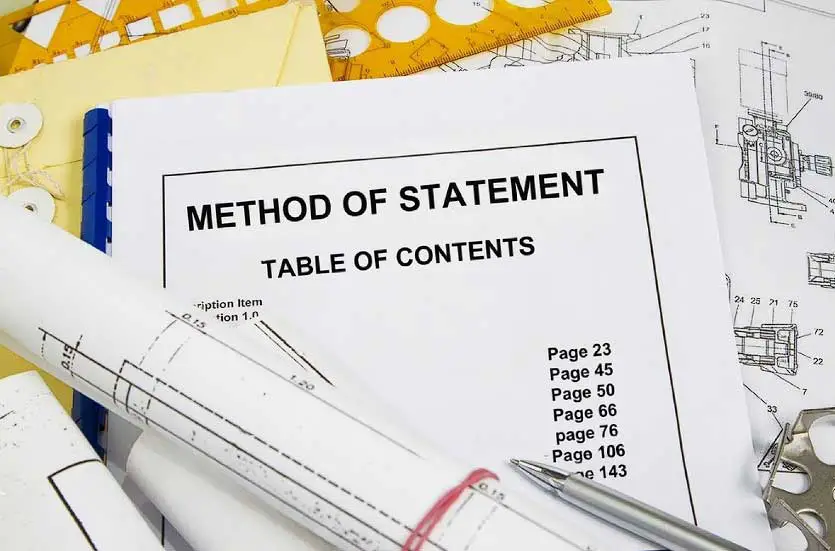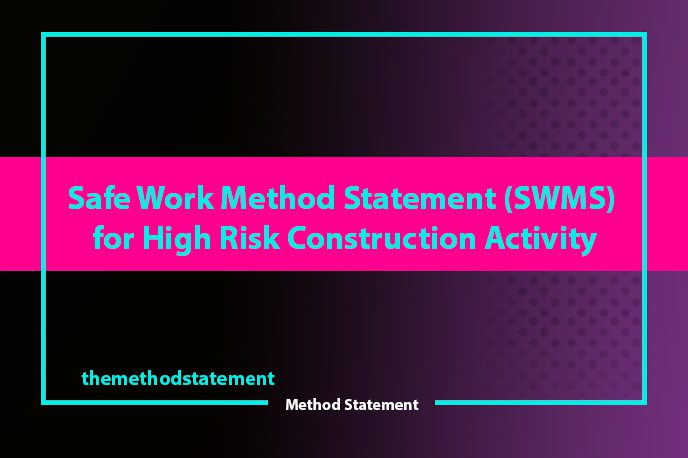Table of Contents
- What is SWMS in Construction?
- Understanding SWMS – Safe Work Method Statement
- What are my responsibilities?
- Who Should Prepare an SWMS – Safe Work Method Statement?
- What is the Role of the Principal Contractor?
- What Information Should an SWMS Include?
- SWMS – Safe Work Method Statement Template
- Is it Possible to Use a Generic Format?
- Implementing and Reviewing an SWMS
- Where should an SWMS be Kept?
- FAQs
What is SWMS in Construction?
An SWMS is a document that describes the high-risk construction work activities to be performed at a workplace, the potential hazards arising from these activities and the measures required to be implemented to control risks.
This information offers guidance to those who are responsible or the person conducting a business or undertaking (PCBU) on how to function, content, and application of safe work method statements (SWMS). The Work Health and Safety (WHS) Regulations require SWMS for 18 high-risk construction work activities mentioned:
- Risk of a person falling more than 2 meters
- Likely to involve disturbing asbestos
- Work in or near a shaft or trench deeper than 1.5 m or a tunnel
- Work on or near chemical, fuel, or refrigerant lines
- Work on or near energized electrical installations or services
- Work in an area that may have a contaminated or flammable atmosphere
- Tilt-up or precast concrete elements
- Work on, in, or adjacent to a road, railway, shipping lane, or other traffic corridors in use
- by traffic other than pedestrians
- Work in an area with the movement of a powered mobile plant
- Work in areas with artificial extremes of temperature
- Work in or near water or other liquid that involves a risk of drowning
- Diving work
- Work on a telecommunication tower
- Demolition of the load-bearing structure
- Temporary load-bearing support for structural alterations or repairs
- Work in or near a confined space
- Use of explosives
- Work on or near pressurized gas mains or piping
Work of minor nature does not require an SWMS.
For more information about what work constitutes “minor nature,” please see the Construction work – work of minor nature information sheet. The Code of Practice: Construction Work defines the requirements for SWMS and this information sheet provides further guidance.
To obtain further information on SWMS, please refer to the local WHS regulator website, which is linked to the Safe Work Australia website home page.
Understanding SWMS – Safe Work Method Statement
A single SWMS may be used for work involving multiple high-risk construction activities, such as work that requires the use of powered mobile plants, working at heights of more than two meters, and working alongside a road that is used by traffic other than pedestrians.
SWMS is an administrative control, which is used to support higher-order controls aimed at eliminating or minimizing health and safety risks, such as engineering controls.
It is usually distinct from other documents that focus on specific tasks or processes, such as a Job Safety Analysis or a Safe Operating Procedure. Rather, an SWMS is intended as a tool to help supervisors and workers confirm and monitor the control measures required at the workplace.

What are my responsibilities?
A PCBU must prepare an SWMS for high-risk construction work activities, or ensure that an SWMS has been prepared. An SWMS must be prepared before work commences. An SWMS is not required for all other construction activities. However, a PCBU must manage health and safety risks by eliminating or minimizing risks to the extent that is reasonably practicable.
A principal contractor must also obtain the SWMS before high-risk construction work on a construction project starts.
Who Should Prepare an SWMS – Safe Work Method Statement?
The person in charge of the high-risk construction work is best suited to prepare the SWMS, in consultation with workers who will be involved in the work. Generally, the builder prepares the SWMS for their workers, while subcontractors do the same for their workers and themselves.
It is crucial that principal contractors, builders, and subcontractors consult with each other to determine who should prepare the SWMS. Managers, contractors, leading hands, and workers must all be involved in developing it.
Consulting with workers is important to ensure that they understand the details of the SWMS and what is required to implement and maintain risk controls. Sharing information and using the knowledge and experience of workers will help ensure that the work is performed safely.
If there is a Health and Safety Representative at the workplace, they should also be consulted when developing an SWMS.
What is the Role of the Principal Contractor?
According to the WHS Regulations, every “construction project” with a construction cost of $250,000 or more must have a “principal contractor.” A principal contractor must take all reasonable steps to obtain an SWMS from any contractor carrying out high-risk construction work before the work begins. If no SWMS is available, the principal contractor must make arrangements for one to be prepared, such as by the contractor.
A principal contractor must establish arrangements to ensure that the high-risk construction work is performed safely in accordance with the SWMS. This can be accomplished by monitoring the implementation of the SWMS on the ground. The WHS Regulations require the principal contractor’s WHS management plan to include specific arrangements for collecting, assessing, monitoring, and reviewing the SWMS.
What Information Should be Included?
An SWMS must:
Identify high-risk construction work
Specify hazards and risks to health and safety related to the high-risk construction work
Describe the measures to be implemented to control the risks
Describe how the control measures are to be implemented, monitored, and reviewed.
An SWMS should be concise and focus on the specific hazards identified for the high-risk construction work to be carried out and the control measures to be put in place to ensure that the work is carried out safely. A lengthy, overly detailed SWMS can be difficult to understand, apply at the workplace, monitor, or review.
An SWMS must be easily understood by workers, including those from non-English speaking backgrounds. Using pictures or diagrams may be a more effective way of communicating information.
While there are other legislative requirements to ensure health and safety, such as controlling exposure to noise and manual task hazards, these hazards and risk controls do not need to be included in an SWMS. If the SWMS is based on a workplace-specific risk assessment, evidence of the risk assessment may be required by the regulator or for auditing purposes but does not need to be detailed in the SWMS.
SWMS – Safe Work Method Statement Template
An SWMS template that outlines the information that must be included in an SWMS. The template also includes other information that should be included as best practice, such as who was consulted to prepare the SWMS. However, when adding more information to the SWMS, it is essential to consider the importance and relevance of the information and whether it will add unnecessary length or complexity to the document.
Is it Possible to Use a Generic Format?
In order for a Safe Work Method Statement (SWMS) to be effective, it must reflect the specific circumstances of the workplace in which it will be used. This includes the workplace where the high-risk construction work will take place, the work environment, and the workers who will carry out the work.
If a generic SWMS is used at different workplaces without being reviewed and amended to address the hazards and risks specific to each location, it may not meet the requirements of the Work Health and Safety (WHS) laws. To cover a variety of tasks, one SWMS can be prepared, as long as it takes into account the changing nature of the work environment.
Alternatively, a separate SWMS can be created for each high-risk construction work activity, especially when different activities may impact each other, such as using a powered mobile plant during the construction of a tunnel.
Implementing and Reviewing an SWMS
High-risk construction work must be carried out in accordance with the SWMS. The Person Conducting a Business or Undertaking (PCBU) must ensure that arrangements are in place to ensure compliance with the SWMS, such as workplace visits. If the work is not being carried out in accordance with the SWMS, it must be stopped immediately or as soon as it is safe to do so.
In such cases, the SWMS should be reviewed, and if necessary, revised to reflect the safest way to carry out the work that is reasonably practicable. Work must not resume until it can be carried out in accordance with the SWMS.
The PCBU must also ensure that the SWMS is reviewed and revised as necessary if the measures put in place to control risks to health and safety are revised.
Where should an SWMS be Kept?
The SWMS should be kept at the workplace where the high-risk construction work will take place. If this is not possible, it should be kept at a location where it can be delivered to the workplace quickly. Alternatively, it can be kept electronically.
Further information
More information can be found in the Code of Practice: Construction work on the Safe Work Australia website (www.swa.gov.au). Topics related to a form of safety statement used within the construction industry in Australia.
See Also : Safe Work Method Statement Example

FAQs
Is an SWMS the same as a risk assessment?
No, an SWMS (Safe Work Method Statement) is not the same as a risk assessment, although they are related and both are important for ensuring safety in the workplace.
A risk assessment is a process of identifying and analyzing potential hazards or risks in a workplace or activity, evaluating the likelihood and severity of harm that could result, and then determining appropriate measures to control or mitigate those risks. The goal of a risk assessment is to prevent or reduce the likelihood of accidents, injuries, or other adverse outcomes.
An SWMS, on the other hand, is a document that outlines the specific steps and procedures to be followed when carrying out a high-risk activity or task, with the aim of ensuring that the work is carried out safely and in compliance with relevant regulations and standards. An SWMS typically includes information such as the hazards and risks associated with the task, the controls that will be implemented to manage those risks, the qualifications and training required of workers, and emergency response procedures.
While an SWMS may incorporate the results of risk assessments, it is a more detailed and specific document that focuses on the practical aspects of carrying out the work safely, while a risk assessment is a broader evaluation of potential hazards and risks.
What is the difference between a JSA and SWMS?
SWMS serves as a reliable tool for recording worker duties, while JSA is a concise format that outlines potential hazards linked with a given role or assignment.
What is SWMS in safety control measures?
A safe work method statement (SWMS) is a document created for high-risk construction work as defined by the Work Health and Safety (WHS) Regulation 2017. Its purpose is to plan and ensure safety measures are in place for the designated task.
What is SWMS for welding work activities?
A welding safe work method statement (SWMS) is a written record that outlines a company’s planned procedures for conducting welding operations. This documentation includes necessary training, engineering specifics and certifications, machinery, and equipment used, as well as mandatory personal protective equipment (PPE), as presented in this template.
tag: # SWMS, Safe Work Method Statement, What is SWMS
work, high risk work swms, method statement, construction, safety, workers, risk, risks, project, document, hazards, details, activities, control, workplace, site, measures, statements, management, job, contractor, view, example, activity, documents, health, individuals, vp, controls, environment, occurrence, equipment, steps, analysis, incidents, components, guarantee, training, What is SWMS, risk construction duration
